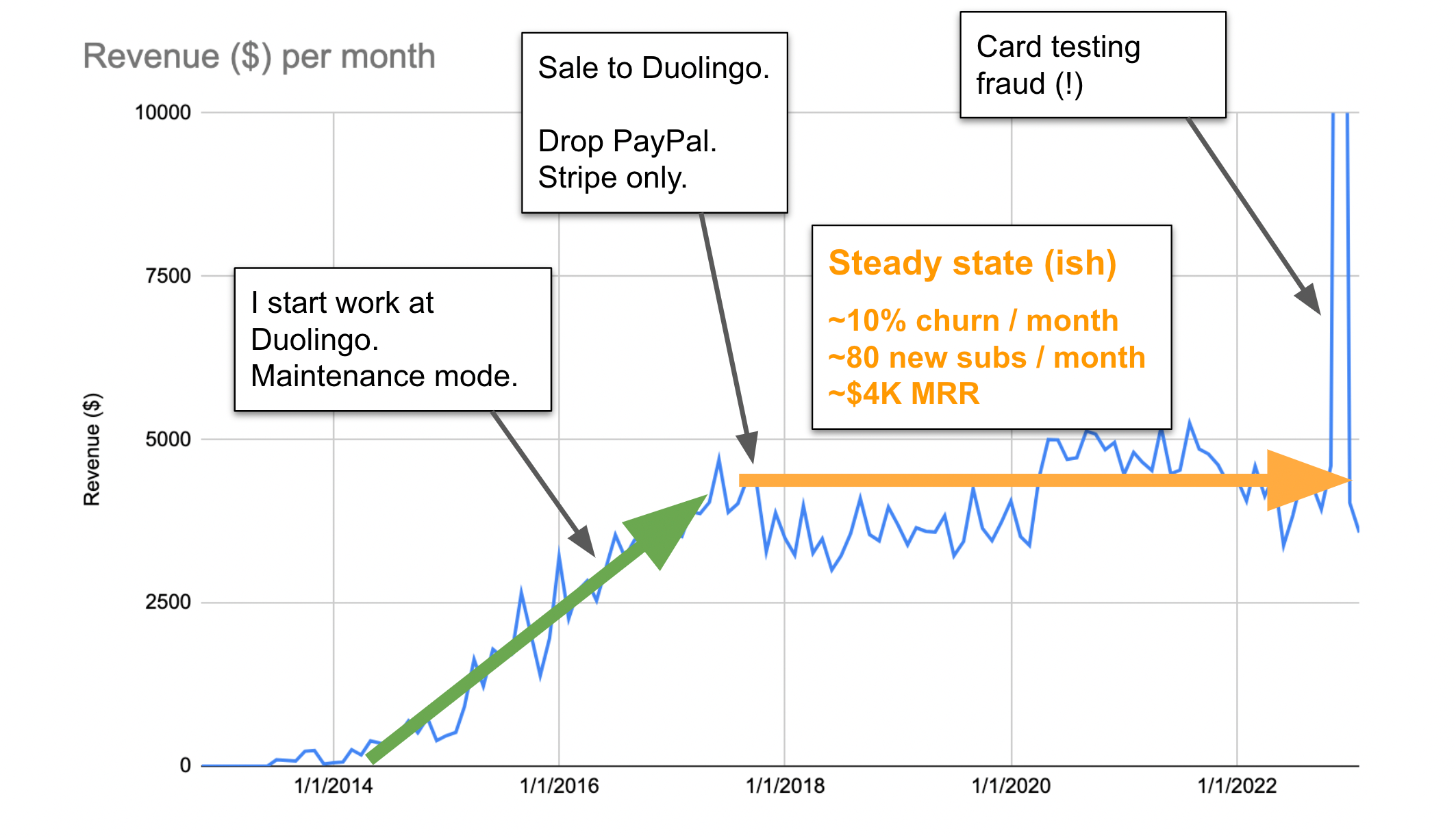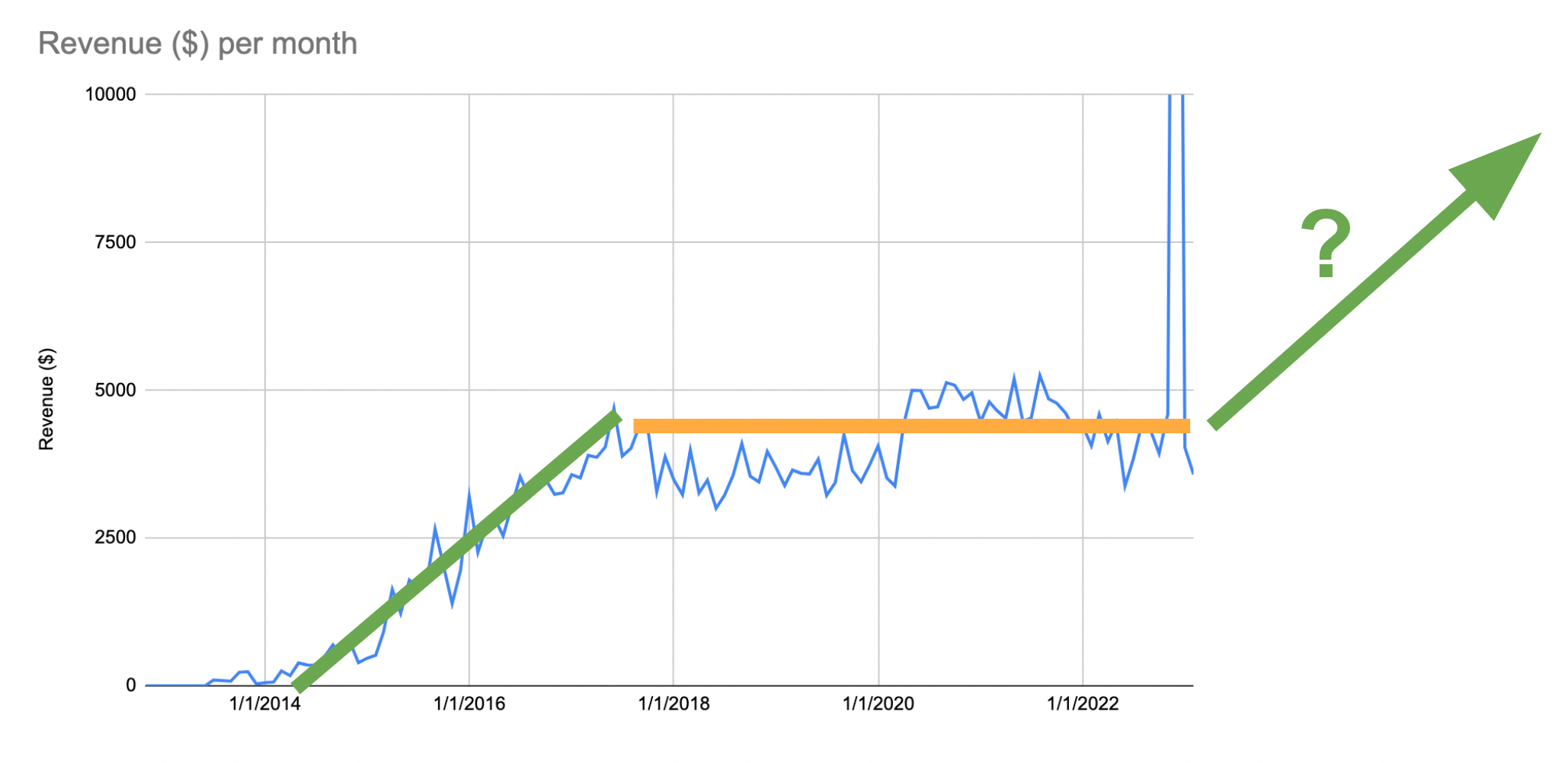I Bought Back My Acquihired Startup
I wrote about my language learning startup, Readlang, back in 2014, and then again in 2016, both times attracting attention on Hacker News, where my story of a struggling one-man startup seemed to resonate. Well, it’s now 7 years later, and a bunch has happened since, so it’s time for an update…
The Aquihire
My Readlang story caught the attention of Duolingo and I went to work there in 2016. Meeting them for the first time on their company vacation at a fancy resort in Costa Rica was a culture shock after my frugal bootstrapper lifestyle. “You’ll get used to it” said one of the other engineers, which turned out to be half right. It was a wonderful, surreal experience.
We talked about a potential Readlang sale before I joined Duolingo. But they were more excited for me to work for on other projects. It sounded like an aquihire which made me uncomfortable. So instead we agreed that I would work for them for a while and keep Readlang on the side. I spent the first 9 months working on an ill-fated chatbot (a few years too early as it turns out). After this, I decided that I had unfinished business and emailed to say that I’d be leaving to work on Readlang again. They quickly got back to me and said I could have carte-blanche to work on a completely new product around listening. I had ideas in this area already, and it seemed too cool to turn down. Get paid to hack together a new prototype that I would be in charge of? Yes please!
My idea was to launch an MVP and then leave to work on Readlang again. Within a few months we launched the first version of Duolingo Stories and the reception both internally and externally was really promising. So much so that I was now pretty excited to continue growing it. It seemed we were onto something. Given that Stories was kinda similar to Readlang, it felt weird for me to be running Readlang on the side, so I brought up the option of a sale again with the idea that I’d either go all in with Duolingo or leave for Readlang. I figured that eventually I’d either work on Readlang inside Duolingo or Stories might even evolve to become a replacement for Readlang. So we did the deal. We migrated the site to run on their infrastructure and the customer’s payments went to Duolingo’s Stripe account instead of mine. Beyond that, nothing much changed with Readlang. Stories grew, but it never did turn into a Readlang replacement. I occasionally thought about pitching Readlang as a project to focus on, but I could never convince myself that it would move the needle at Duolingo’s scale, and so it was neglected.
The Buy-Back
At the end of 2021 I left Duolingo and with it, Readlang. I left instructions on how to maintain Readlang but figured that one day something would break, and there was a good chance they’d want to shut it down. I said that if it ever got to that point to please get in touch with me.
I spent most of 2022 half-heartedly working on some other projects (JigglePix, Flashdown, Notepad Calculator), until in December I got 3 emails from random people complaining about payments being taken by Readlang that they had no idea about. To get 3 emails to my personal email was pretty strange. I asked Duolingo and they confirmed that something was going wrong. It turned out that people were using Readlang for card testing fraud. After I helped them to fix the problem and refund everyone they asked if I wanted Readlang back and how much I’d pay. Of course I said yes!
How Is Readlang Doing Now?
Surprisingly OK! If you had asked me 7 years ago what would happen to Readlang if I just abandoned it and left it in maintanence mode for all this time, I would have bet that it would have declined, but actually, it basically held steady. Here’s a monthly revenue graph:

The first few years show good growth. During this time I was constantly adding new features, blogging about it, and it largely spread organically with enthusiastic users sharing it in different online and offline communities. After putting it maintenance mode in early 2016 it continued growing until the sale to Duolingo. At this point we dropped PayPal for simplicity resulting in a dip but after that revenue held surprisingly constant. About 10% of users were churning each month but the supply of new users never dried up. People continued to recommend Readlang, it even appeared in one of Tim Ferriss’ “5 Bullet Friday” newsletters in 2018! There was a noticeable bump in 2020 likely driven by the pandemic lockdowns.
That’s the beauty of software - up-front work can continue delivering value for years to come!
Now that I have it back, I’m wondering how to get it to do this…

I have ideas. And of course there are more ideas that time to implement them. Recently I experimented with adding ChatGPT-powered Smart Definitions. But I think the most important thing is to improve the streak mechanic to get people more invested in returning every day - did I mention I worked at Duolingo? :-) If I manage to improve growth then I might even think about re-investing the profits and get someone else to help out. It’s not like I’m committed to this one-man-startup approach forever!
Anyway, I’m looking forward to improving Readlang again. It’s fun to have my baby back!